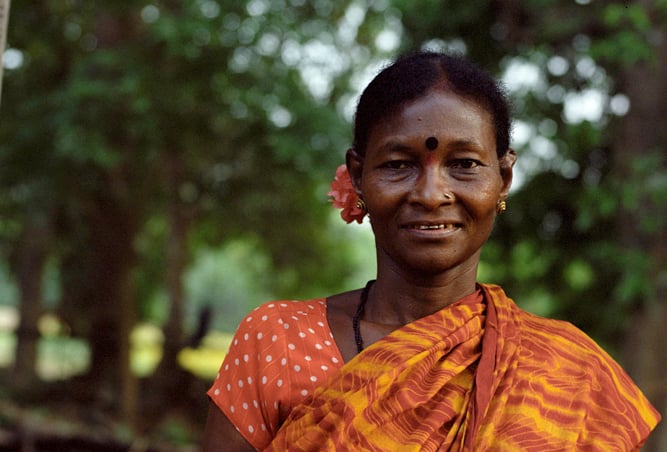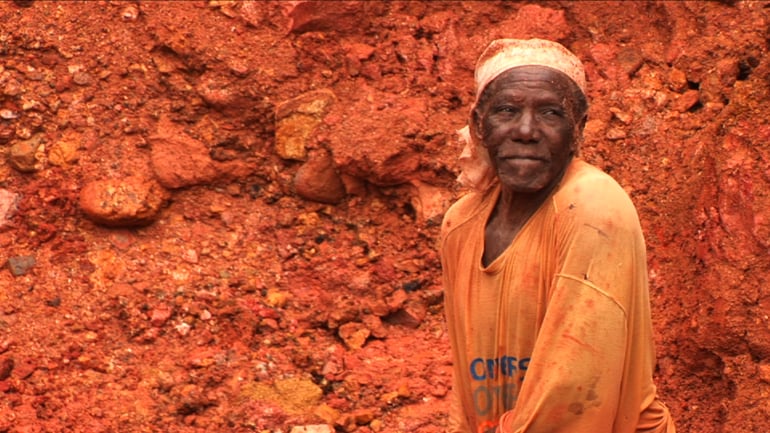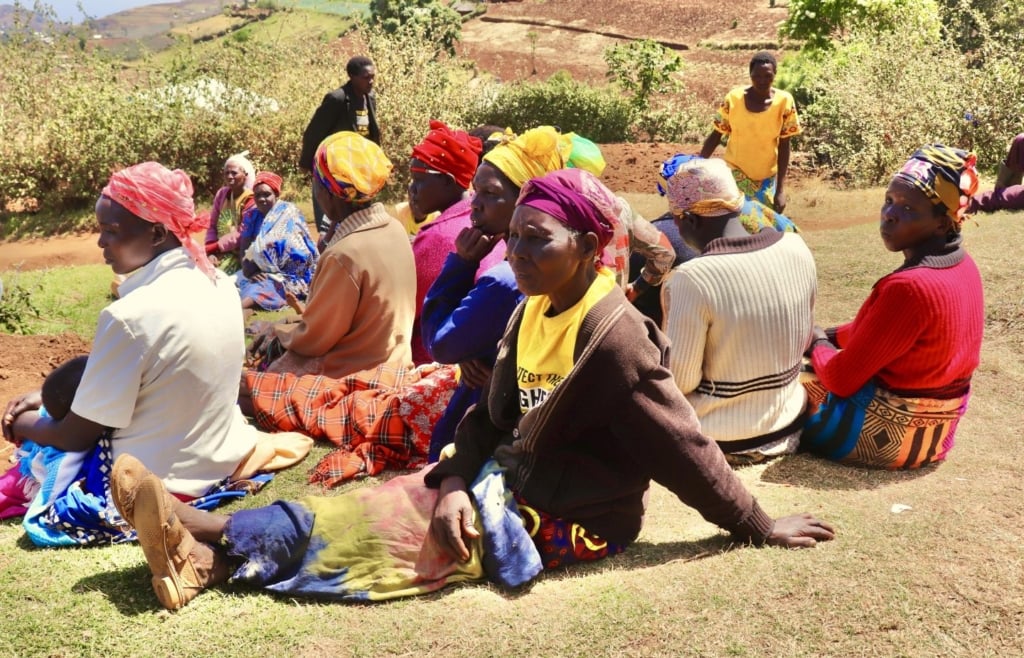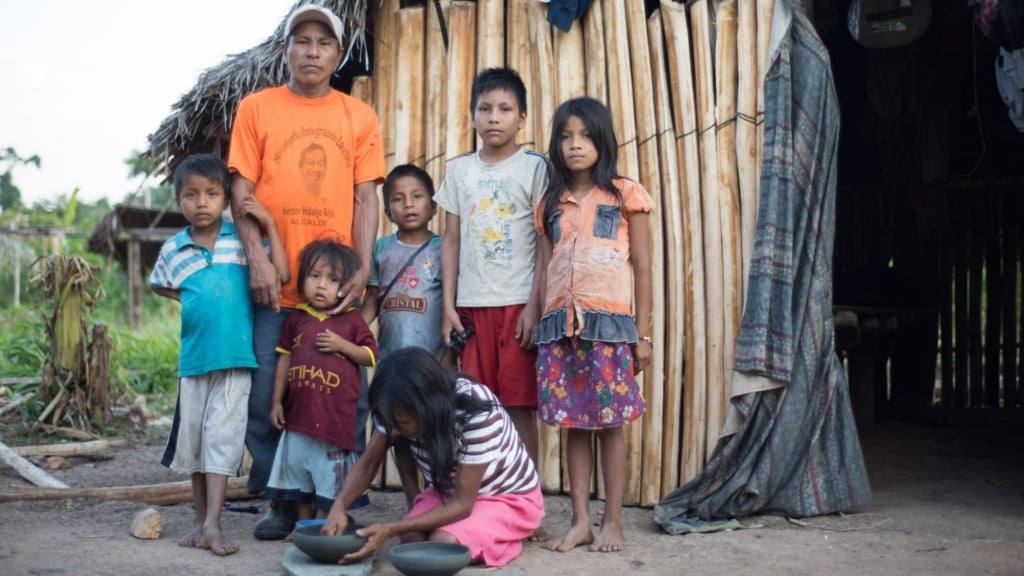Colombia
-
Main languages: Spanish; 65 official indigenous languages; 2 Creole languages: Palanquero(spoken in the municipality of San Basilio de Palenque) and Creole (spoken in the archipelago of San Andrés, Providencia and Santa Catalina); and the Romaní language (2018 Census).
Main religions: Christianity (majority Roman Catholic), Judaism, indigenous and Afro-Colombian religions.
Main minority and indigenous groups: According to the 2018 Census, 1,905,617 (4.4 per cent) people belong to various indigenous peoples; 4,671,160 (9.34 per cent) Afro-Colombian and 2,649 (0.01 per cent) Romaní people (2018 Census).
The National Administrative Department of Statistics (DANE) recognizes 115 indigenous peoples in Colombia. Representing 80 per cent of Colombia’s indigenous population, the National Indigenous Organization of Colombia (ONIC in Spanish) has nonetheless criticized DANE for failing to comply with previous consultation agreements to roll out the 2018 Census in indigenous territories, thereby decreasing the representation of indigenous communities in the population survey.
Colombia also has the second largest Afro-descendant population in Latin America after Brazil. DANE has recognized that there are four distinct Afro-descendant groups in the country: Black, Afro-Colombian, Raizal and Palenquero communities. The department of Valle del Cauca is the most populous Afro-Colombian state.
-
Colombia’s long history of civil conflict, involving government forces, the Revolutionary Armed Forces of Colombia (FARC) and a host of other rebel insurgencies, paramilitary groups and criminal gangs, has spanned more than 60 years and caused the deaths of more than 260,000 people, with over 8 million others displaced. Many of the victims have belonged to peaceful indigenous, Afro-Colombian and other rural communities inhabiting the remote and mountainous areas where the fighting has raged. Reflecting a broader context of discrimination and exclusion, minorities and indigenous peoples have been disproportionately affected by the violence, with many communities targeted with violence and eviction from their lands by rebel groups, paramilitaries and criminal gangs seeking to gain control over their resources.
While there have been positive developments in Colombia’s peace process, most notably the ceasefire agreement drafted between the government and FARC in 2016, the outcomes so far have been mixed. Among other provisions, the agreement outlined demobilization of FARC fighters in return for political participation, targeted development programmes for rebel-held areas and other guarantees, including universal access to education and clean water. However, the government of former President Iván Duque was accused of failing to deliver on many of its promises of development and infrastructure in marginalized and impoverished areas of the countryside, where lawlessness, poverty and continued drug cultivation persist. This has raised fears that some fighters could remobilize in the future if confidence in the peace agreement breaks down.
During President Duque’s term in office, Colombia made little progress in implementing the peace agreement. His tenure saw an increase in killings of human rights defenders, while the implementation of key aspects of the peace accord, such as the fight against drugs and the allocation of land to farmers, remained limited. Although the Duque government had initiated peace talks with the National Liberation Army (ELN) guerilla group under certain preconditions, these talks were suspended following an attack by the ELN in 2019 on the General Santander Police Cadet School, resulting in the deaths of 20 people and numerous injuries. On 21 November 2022, as part of an ambitious ‘Total Peace’ agenda, the new administration of President Gustavo Petro restarted peace talks with the ELN, which led to a 6-month ceasefire agreement signed on 9 June 2023
Despite the Petro government’s willingness to seek ‘total peace’ with the different armed groups that have participated in the armed conflict and to bring criminal gangs to justice, there are still considerable challenges ahead. These are related to the distinct nature of organizations such as the ELN, which is a guerilla movement, and criminal gangs such as the Clan del Golfo, which are not and require differentiated treatment. For now, the country celebrates the ceasefire signed by Petro’s government with the ELN.
Indigenous and Afro-Colombian communities share similar challenges of targeted violence, dispossession from communal lands and limited access to health, education and livelihood opportunities. To varying degrees these factors are driving displacement and migration across the country, which in turn is leading to increased urbanization, even from more remote communities. Indeed, for social leaders and activists the threat of violence remains high, with 1,327 killed since the signing of the peace agreement between the Colombian state and the FARC, according to 2022 data collected by the Institute of Studies for Peace and Development. Minority and indigenous communities have borne the brunt of this violence, with the National Indigenous Organization of Colombia (ONIC) reporting that 269 indigenous leaders were killed from 2016 to 2020.
Many of these assassinations of human right activists have been attributed to right-wing paramilitary groups, often using fronts of legitimate organizations, killing or displacing people in areas previously controlled by FARC, in part to control the coca or mining operations in these regions. Furthermore, predominantly in the regions of Chocó, Antioquia, Cauca and Norte de Santander, human rights violations continued against Afro-Colombians and indigenous communities, including forced displacement and forced confinement of these communities within their territories, thereby limiting freedom of movement and access to food as well as essential services. In a similar manner, other crimes such as the use of anti-personnel mines, the forced recruitment of children and sexual violence have also persisted. Given the limited state presence in many areas previously controlled by FARC, illegal armed groups have been able to exploit the power vacuum to their own advantage.
Colombia’s indigenous peoples include 115 recognized communities and were estimated by the 2018 Census to comprise 1,905,617 persons. They have struggled for decades to defend their lands from encroachment not only by rebel groups and criminal gangs but also by government-sponsored programmes for mining and oil or gas extraction. With hundreds of concessions granted in ancestral territories, indigenous peoples have frequently found themselves on the frontline of violence and land rights violations, with activists regularly subjected to harassment, intimidation and killings. The impact of displacement and evictions from their lands has also taken a heavy toll on the identity and wellbeing of some communities, with some experiencing high levels of anxiety and mental health issues. Civil society organizations have highlighted the risk of physical and cultural extinction that many smaller communities face.
The Afro-Colombian community numbers around 4.6 million people, most of whom are based in urban areas. They are the majority population in towns on the Pacific coast and also live in low-income settlements in the major cities. Widespread displacement from communal lands has contributed to this urbanization process. As with the country’s indigenous population, Afro-Colombians have been particularly badly affected by violence and displacement resulting from the armed conflict, criminal violence and the drugs trade, with continued insecurity since the 2016 peace agreement. Their vulnerability is further exacerbated by the profound social disparities they face, with high levels of unemployment, widespread poverty and limited access to essential services such as health care.
Indigenous and Afro-Colombian community groups, joined by international allies, expressed their deep concern at the end of 2019 concerning the announcement, through a draft decree, by the Colombian authorities that they would revert to aerial spraying of illegal crops with glyphosate. In light of past experience, particularly during the US-sponsored Plan Colombia, indigenous and Afro-Colombian leaders expressed their fear that aerial spraying will have a direct negative impact on their communities’ health and the environment, while also increasing deforestation. Although the draft decree excluded national parks and officially recognized ethnic territories requiring prior consultation, aerial spraying will push coca cultivation deeper into the forest, bringing with it armed groups and increased violence. A legislative proposal to ban the use of glyphosate in illicit crop eradication activities in Colombia is currently being discussed by the Colombian Congress with the support of the government.
The Truth Commission established by the 2016 peace agreement issued its final report in 2022. Indigenous Commissioner María Patricia Tobón Yagarí, an Emberá lawyer, presented the ethnic chapter to the Colombian government. The report documents how the internal armed conflict perpetuated the racist and colonial power dynamics of the colonization period. In delivering the report, Commissioner Leyner Palacios emphasized how indigenous and Afro-descendant individuals were killed during the armed conflict, often following brutal methods such as beatings or machete attacks. The perpetrators believed that these victims ‘did not deserve to be shot with bullets, as they did not want to spend resources on ammunition for them’. The report demonstrated how indigenous and Afro-descendant communities were disproportionately affected by the war.
In a highly meaningful act and in an attempt to give ethnic minority and indigenous communities access to high state positions, Gustavo Petro appointed three indigenous people in 2022 as members of his cabinet. Leonor Zalabata Torres was given the role of Ambassador to the United Nations in New York. She is an Arhuaca social leader and human rights defender with degrees in medicine and politics. Petro also appointed Truth Commissioner Tobón Yagarí as the director of the Unit for the Attention and Integral Reparation to the Victims (also known as the Victims Unit). Additionally, Giovanny Yule, a sociologist and Nasa leader, has been selected to head the Land Restitution Unit. With the appointment of Francia Márquez as the first Black woman to be elected Vice-President of the Republic, Afro-descendant and indigenous communities put their hope in a progressive government that guarantees access to their rights.
-
Environment
Colombia is the fourth largest country in Latin America (1,141,748 square kilometres) and has the second largest population (over 51 million inhabitants). Colombia is bordered to the east by Venezuela and Brazil; to the south by Ecuador and Peru; to the north by the Atlantic Ocean through the Caribbean Sea; and to the west by Panama and the Pacific Ocean.
History
Colombia’s history has been characterized by frequent periods of political violence and protracted civil war dating back to as early as the second half of the 19th century. The historic origins of the conflict can be traced back to longstanding power struggles for political dominance and control over land and natural resources waged between ruling political elites of the conservative (PC) and liberal (PL) parties. The period from 1920 to 1958 (‘La Violencia’) was marked by bloody civil war and enduring phases of high intensity violence resulting in at least 200,000 deaths.
In 1958 the PL and the PC entered into a power sharing arrangement which excluded other political parties, sparking the emergence of left-wing guerilla movements: Ejército de Liberación Nacional (ELN); Fuerzas Armadas Revolucionarias de Colombia – Ejército del Pueblo (FARC-EP); and into the 1970s the M-19 movement whose leaders eventually laid down their arms in 1989 and later became highly visible and influential in conventional politics.
The nature and roots of Colombia’s conflict (from 1964 onwards) have evolved over time. The most recent phases have been motivated by a complex mix of political ideology and competition for territorial and natural resource control involving international private capital, drug traffickers, right-wing paramilitaries, leftist guerillas, government forces, and military and economic interventions from powerful western governments such as the United States.
Initially the ELN and FARC declared their aims to be the removal of a corrupt ruling elite whose power was based on patronage and exclusion. But the conflict persisted with both left-wing and right–wing armed groups becoming heavily involved in and reliant on the narcotics trade as a means of funding their war and amassing private wealth.
The greatest number of victims were civilians and the majority of these drawn from Afro-Colombian and indigenous communities, who as a result of the conflict became victims of severe human rights violations, including forced displacements and disappearances, kidnappings, massacres, selected and systematic killings of their leaders, and the illegal usurpation of their lands, amongst other crimes. They also continued to suffer the highest levels of poverty and lacked access to basic social services such as healthcare and education.
However, it must be stressed that this pattern of abuse did not start in the present round of conflict, but throughout their collective history, beginning in 1492 with the arrival of Christopher Columbus and the conquest by the Spanish colonizers. Indigenous peoples were known to have lived on their territories for hundreds of years before Columbus’ arrival. The conquest led to their enslavement, physical and cultural decimation, forced displacement from their ancestral lands, and the plundering of the natural resources found within them. A century after the colonial invasion the indigenous population had been reduced by 90 per cent, and by the beginning of the sixteenth century the colonists were shipping in thousands of African slaves every year to replace them as labourers, the majority of whom ended up working on plantations and in mines.
However, by the end of the 16th century, slave revolts and breakouts began to constitute a grave problem for the Spanish crown, as escaped slaves, who became known as Cimarrons began to organize politically and militarily in maroon or palenque communities which they protected with fences and arms. The palenque community of San Basilio in the municipality of Mahates de Bolivar and established in 1603 has been declared the first free town of the Americas. It was able to survive throughout the colonial period and its inhabitants have been able to preserve their culture until the present day, which is expressed through their language and traditional Afro-centric culture.
Romani people also constitute a significant ethnic minority in Colombia. Their roots can be traced back to the arrival of Christopher Columbus who was said to have been accompanied by four Roma on his third expedition to the Americas. These four were said to have been beneficiaries of a ‘pardon’ granted to them by the Spanish crown for the ‘crime’ of being Roma, which commuted their sentence to hard labour. In 1582, the Spanish forbade the arrival of Roma to their colonies and expelled many of them. However, some Roma managed to remain by hiding in the margins. Following independence from Spain, a law was adopted in 1821 prohibiting the importation of slaves and declaring that slaves from other countries would be granted freedom. This motivated Roma who still faced slavery in Europe to arrive.
By the 1970s indigenous and Afro-Colombian political and social movements became more consolidated and coherent in their strategies for the defence of their cultures, identities, land rights, traditional knowledge systems, languages and autonomy. Such struggles were later to be brought to fruition in the Constitution of 1991 which made minorities more visible in national life and sought to guarantee their fundamental human, political, social, economic and cultural rights. In fact, Article 7 of the 1991 Constitution stated that ‘The State recognizes and protects the ethnic and cultural diversity of the Colombian Nation’.
Colombia’s most recent armed conflict began with the formation of FARC. Founded in the mid-1960s as the armed wing of the Colombian Communist Party, following attacks on rural Communist enclaves by the military in the wake of the decade-long period known as ‘La Violencia’ (1948-58), when between 200,000 and 300,000 people were killed. FARC’s insurgency, inspired by Marxist-Leninist ideology and the recent revolution in Cuba, was rooted in grievances driven by the concentration of land in private hands and the profound inequalities between its ruling elite and its impoverished peasantry. However, in the ensuing years the group became increasingly dependent on criminal activities such as kidnapping, illegal gold mining and drug trafficking to fund itself, eventually making it one of the richest rebel movements in the world.
The development of other armed insurgencies, the proliferation of paramilitary groups and the growth of Colombia’s vast cocaine market all contributed to decades of protracted insecurity. The government’s approach to addressing its drug trade, such as the United States-sponsored Plan Colombia, was typically characterized by violence and heavy-handed approaches such as aerial crop fumigation that had a devastating impact on rural communities. Despite periodic efforts at peace negotiations between the Colombian government and FARC, the conflict continued for more than five decades before a historic peace agreement was brokered by the government of Juan Manuel Santos in 2016.
Though the terms of the agreement were narrowly rejected in a popular referendum in October 2016, the government and FARC signed a revised agreement the following month that was approved by Congress. Despite optimism about the end of the conflict, the country continues to contend with high levels of violence and insecurity, with many former conflict zones still blighted by the presence of criminal groups and paramilitaries. In addition, while most FARC fighters have formally demobilized, the ELN remains in operation, although a 6-month ceasefire was signed in 2023.
Governance
Before the 1991 Constitution, indigenous peoples were not recognized as equal citizens within the Colombian state and were not granted individual or collective civil, political, cultural, social and economic rights under Colombian law. Until then, indigenous peoples were defined and treated by the terms laid down in the law 089 of November 1890 which determined that the government in agreement with the Catholic church would decide on the way in which the ‘Salvajes’ (‘savages’) should be governed. The same law reduced indigenous peoples to the status of minors specifically with regards to the management of the reservations, or resguardos, which had been created and granted to them under Spanish colonial rule.
Although the original resguardo system established by colonists represented a strategy for social control, exploitation and segregation of the indigenous peoples, it later became the legal entity in which indigenous land rights became vested, and for which indigenous peoples fought as part of their struggle for the reclamation of their rights. The movement initiated by the Paéz farmer Manuel Quintín Lame, between 1910 and 1940 became the leading model and source of inspiration for successive indigenous movements and activists during the second half of the 20th century and into the 21st.
After much protest and organizing during the 1970s and 1980s there was large-scale titling of forest lands to indigenous communities. The government recognized the territorial rights of indigenous peoples over some 1.8 million square kilometres of its Amazon area. Until the late 1980s it applied only to the lands of indigenous peoples outside the forest areas who could base their claims on ancient title.
Colombia’s Constitution of 1991, drawn up by the National Constituent Assembly, recognizes and protects the ethnic and cultural diversity of the Colombian nation. It concedes to minorities and indigenous peoples ethnic, cultural and territorial rights, and the right to autonomy and participation. It also declares the equality and dignity of all cultures as fundamental to national identity. It recognizes the languages spoken in Colombia as being official in the territories in which they are spoken. The Constitution also enshrines the right to bilingual and ethno-cultural education for all minority and indigenous communities, and proffers dual citizenship to indigenous communities living in border areas.
As a result, minority and indigenous communities have gained greater access and representation within national government and actively participate in political life at both regional and local levels. Such developments have also led to the creation and development of independent and state funded minority and indigenous-focused institutions which have offered minority and indigenous issues greater visibility and led to the limited political empowerment of these communities. Such institutions include the Department for Ethnic Affairs within the Ministry of the Interior, the National Commission on Indigenous Rights, the National Indigenous Policy Council, the Afro-Colombian Mayors’ Council (AMUNAFRO) and the Congressional Black Associates, amongst many others. Indigenous councils and organizations have also become legally recognized, and in ancestral territories or resguardos indigenous systems of justice are also officially recognized as holding jurisdiction.
In 1993 the National Constituent Assembly passed Law 60 (Ley 60) which stipulated that the indigenous reservations would benefit from a certain percentage of state resource allocation proportional to the population found in the designated territory. In the same year, as a result of intense political pressure and campaigning from Afro-Colombian communities, the Constituent Assembly passed Law 70 (Ley 70), which granted land titles for the collective territories of Afro-Colombian communities.
In 1999 the Romani population was recognized for the first time as a national ethnic group through Resolution 022 of 2 September of that year.
Importantly, the 2016 peace agreement included an ‘Ethnic Chapter’ in which a set of ‘principles, safeguards and guarantees’ were outlined to be implemented during the peace process as a means to protect the rights of Colombia’s ethnic minorities and indigenous peoples which had been violated as a consequence of the long-lasting conflict. The inclusion of these provisions was largely driven by the advocacy work of the Ethnic Commission for Peace and Defence of Territorial Rights, consisting of the National Afro-Colombian Peace Council, the National Indigenous Organization of Colombia (ONIC) and the National Afro-Colombian Peace Council (CONPA). Moreover, point 5 of the peace agreement called for a ‘Truth, Justice, Reparation and Non-Repetition System’, which sought to establish reparations and justice for victims of the conflict, as well as prevention of further abuses such as sexual violence and forced displacement of Afro-Colombian, indigenous and rural communities.
However, despite these important political advances, in reality, application of these laws has been somewhat inconsistent and patchy, and in the worst cases simply disregarded. For example, in the same year of 1993 when the Laws 60 and 70 were passed, ONIC issued a region-by-region protest concerning government failure to provide land titles and against continuing invasion of indigenous lands by settlers. ONIC saw the granting of land to forest peoples under the resguardo system as an advantage, but this land is subsequently being declared ‘empty’ and therefore the property of the state.
Among Afro-Colombians, Law 70 only applies to the Pacific communities, but while it limits the use these communities make of natural resources, no such limitations are set on the activities of private national and international logging, oil, mining and biofuel companies. Subsequent laws on mining and other forms of resource extraction have served only to undermine provisions outlined in the Constitution of 1991 guaranteeing minorities and indigenous peoples their territorial rights and the right to manage the resources found within those territories.
Laws to limit migration from mainland Colombia in order to protect the Afro-Colombian Raizal community in San Andrés and Providencia have been poorly enforced and the Raizal language and way of life are threatened by the wholesale buying and appropriation of the islanders’ lands by the tourism industry and foreign and mainland Colombian newcomers.
More recently, despite the stipulations in the ‘Ethnic Chapter’ of the peace agreement, there have been complaints regarding the lack of guarantees to ensure the effective participation of indigenous peoples and Afro-Colombians in its implementation. In September 2017, members of the Permanent Bureau for Co-ordination with Indigenous Peoples and Organizations declared themselves to be in a state of emergency and demanded that these provisions should be respected.
In 2022, Gustavo Petro was elected as the President of the Republic of Colombia, with Francia Márquez, an Afro-Colombian environmental leader and his running-mate, elected Vice-President. Under the current government, significant social reforms have been proposed to Congress, including pension and health reforms. The success or failure of these reforms will play a pivotal role in shaping the outcome of the government’s agenda and its overall impact on the country.
-
General
- Amnesty International
- Association of Afro-Descendent Municipalities (AMUNAFRO)
- Instituto Latinoamericano de Servicios Legales Alternativos
- Colectivo de Abogados ‘Jose Alvear Restrepo’ (CAJAR)
- Caribe Afirmativo1
- Dejusticia2
- Instituto de Estudios para el Desarrollo y la Paz (INDEPAZ)
Afro-Colombians
- Proceso de Comunidades Negras (PCN)
- Asociación de Afrocolombianos Desplazados (AFRODES)
- Association of Afro-Descendent Municipalities (AMUNAFRO)
- Movimiento Nacional Afrocolombiano Cimarrón
- Conferencia Nacional de Organizaciones Afrocolombianas (CNOA)
- Consejo Nacional de Paz Afrocolombiano (CONPA)
- La COMADRE
Indigenous
- Organización Nacional Indígena de Colombia
- Consejo Regional Indígena del Cauca (CRIC)
- Organización Nacional de los Pueblos Indígenas de la Amazonía Colombiana (OPIAC)
- NASA KIWE Corporation
- Asociación de Cabildos Indígenas del Norte del Cauca (ACIN)
U’wa
- ASO U’wa – Autoridades Tradicionales Indígenas U’was del departamento de Boyacá
Kankuamo
- Organización Indígena Kankuama (OIK)
Embera
- OREWA –Organización Regional Embera Wounan de Choco
- Cabildo Mayor Embera Katio del Alto Sinu (CAMAEMKA)
Updated June 2023
Related content
Sofa Talks
-

15 May 2023
Afro-Colombian Day and Life – A Sofa Talk with Angelica Ricaurte Villalobos
Join us right before Afro-Colombian Day (21 May) and hear from an inspiring human rights activist what it means to advocate for social…
Minority stories
-

28 October 2015
Afro-Descendants: A Global Picture
Drawing on a range of case studies, this publication seeks to highlight the invisibility and discrimination that persist for people of African descent to this day, as well as celebrate their achievements as activists, artists and citizens.
- Central Africa
- Discrimination
- Minority stories
Reports and briefings
-
1 June 1995
No Longer Invisible: Afro-Latin Americans Today
The distinct but extraordinarily diverse ethnic and cultural identities of Afro-Latin Americans have received little official recognition….
-
1 July 1987
The Amerindians of South America
For over 20,000 years a wealth of many cultures flourished in South America, both in the high Andean mountains and the lowland jungles and…
Programmes
-
- South America
- Religious minorities
Events
-
 Video on demand
Video on demand 15 May 2023 • 3:00 – 4:00 pm BST
Afro-Colombian Day and Life – Angelica Ricaurte Villalobos
Angelica Ricaurte is an Afro-Colombian human rights lawyer (Universidad de Cartagena) and activist with over 10 years of professional…
Don’t miss out
- Updates to this country profile
- New publications and resources
Receive updates about this country or territory
-
Our strategy
We work with ethnic, religious and linguistic minorities, and indigenous peoples to secure their rights and promote understanding between communities.
-
-




